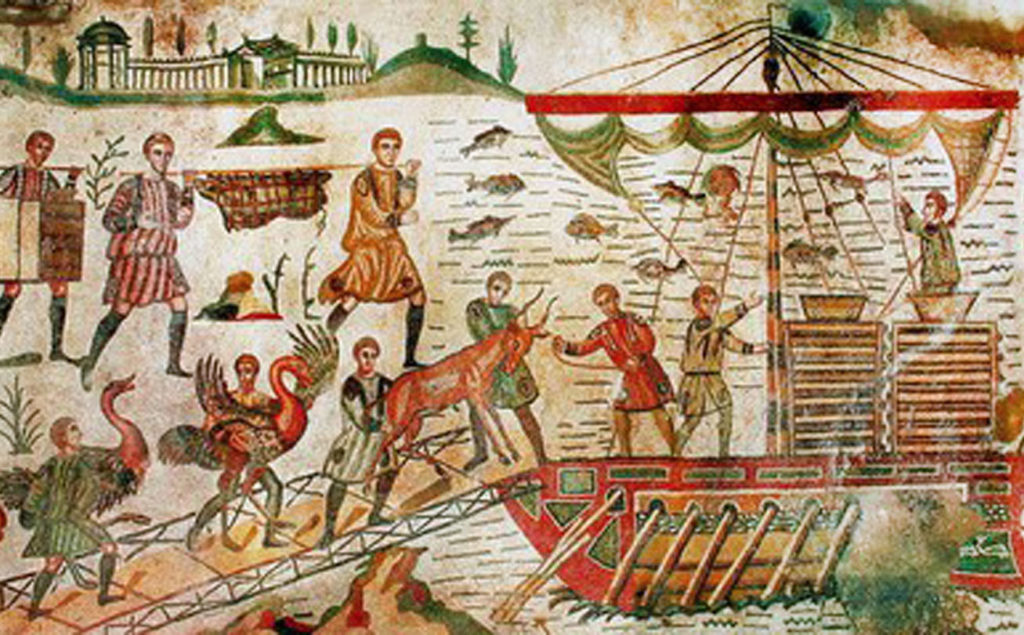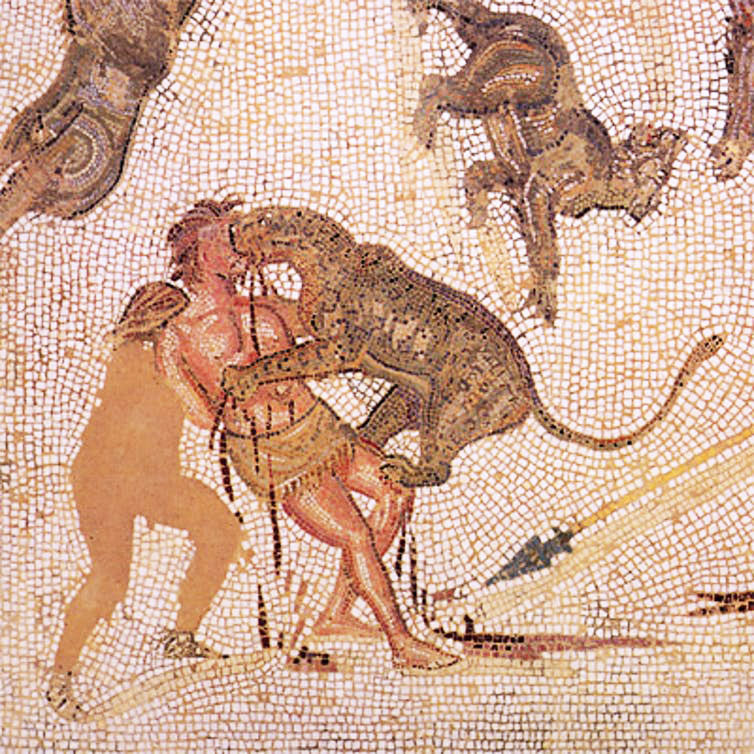In ancient times, one of the attractions of the Roman games were venationes, the hunting of wild animals. Images of roaring lions in the Colosseum come to mind, but the king of the beasts was only one of many such exotic animals featured.
Crossing the Mediterranean Sea brought the eastern and western portion of northern Africa within reach and from southern Egypt came the crocodile, rhinoceros, hippopotamus and giraffe. A vast array of animals came from North Africa, including lions, cheetahs, panthers, elephants and even ostriches. Among the animals that had the longest journey were tigers, which first arrived in Rome during the first century BC. These were brought all the way from India. To the north of Rome, bears, bison and even moose were captured. It was very costly to capture and transport the animals to Rome, so much of the expense was borne by the emperor who sponsored and paid for the expeditions.
Even before the days of the Colosseum, there were great hunting shows. In 104 BC, Muzio Scaevola and Licinius Crassus staged a venatio in the Circus Maximus to celebrate their victory over the King of Numidia (present day Algeria). The featured attractions included one hundred lions brought back to Rome. The number of animals hunted during the games became staggering. A few years later, Pompey, the great Roman general of the first century BC, was in charge of games which included 400 leopards and 600 elephants. It was the largest venatio held, prior to the opening of the Colosseum. When the Colosseum opened in 80 AD, 100 days of games were held by Titus and it is estimated that 9,000 animals were slaughtered.

In ancient times, hunting did not elicit the same response in people as it does today. Large predators were a danger to people and hunting these animals was considered necessary for safety reasons. Many who lived in the areas were grateful to the Romans for ridding them of the dangers posed. The animals were captured by specially trained army units. The main tools used were nets and laces, a precursor of the modern lasso. It was used to pull on the neck of the beasts, which were eventually placed in cages.
The Innocents of Florence
Both the capture and transportation of animals was a huge undertaking since the animals had to stay healthy and travel for thousands of miles. The journey was mostly by sea, the fastest means of travel. Once in Rome, the animals that survived the journey disembarked in Ostia and were transported by barge along the Tiber River. Elephants were an exception. They made the last part of the journey to reach Rome by land.
On the day before the show, the animals were brought to the Colosseum. They would be paraded before the spectators and then be brought back to the underground chambers of the amphitheatre, where they waited for their moment in the arena to fight for their lives in front of thousands of cheering Romans. The animals did not fight against gladiators. Tangling with wild beasts was reserved for the venatores and bestiarii, special classes of warriors who squared off against the beasts. Although there is a popular image of Christians being thrown to the lions, this has more to do with the 1951 movie “Quo Vadis.” The Romans did practice Damnatio ad bestias, “condemnation to beasts,” a grisly form of capital punishment, but it was neither exclusive to Christians, nor lions. It was, however, particularly gruesome, yet it was normally a midday spectacle for Romans, their equivalent to watching television or scrolling through their phones during lunch hour.






